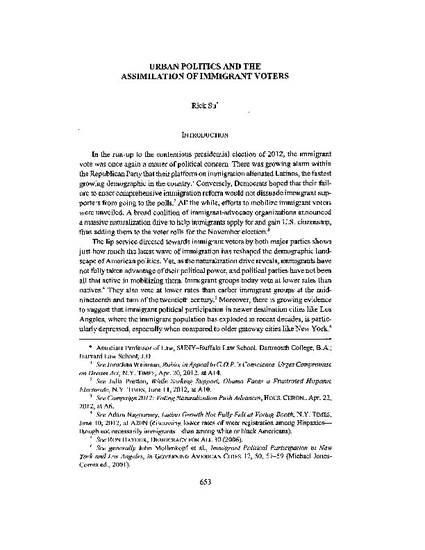
Despite the growing strength of immigrant voters in the U.S., immigrants continue to participate at the polls in much lower rates than not only native voters, but also immigrants in the past. What accounts for this disparity? Looking beyond the characteristics of the immigrants themselves, this essay argues that a major reason lies in the different political structure that immigrants face upon their arrival, especially at the local level. Tracing the evolution of big city politics alongside, and in response to, the three major waves of foreign immigration to the U.S., this essay outlines three competing models of immigrant political assimilation. Each of these models corresponds with a specific era of urban politics: (1) the machine cities of the mid- to late-nineteenth century, (2) the reform cities of the early twentieth century, and (3) the fragmented cities of today. Not only are these models useful for understanding the political behavior of immigrants in different eras of American history, they also shed light on contemporary debates on citizenship, immigration policymaking, and conditions for political participation.
Available at: http://works.bepress.com/rick-su/19/
